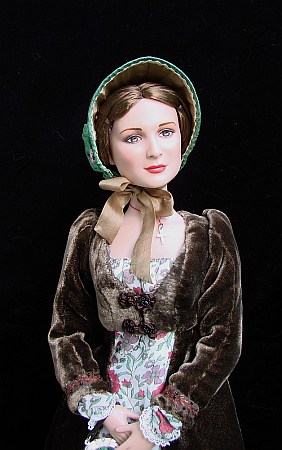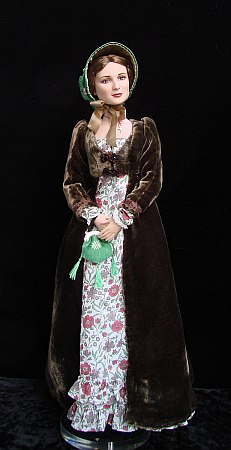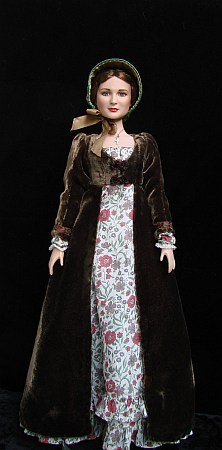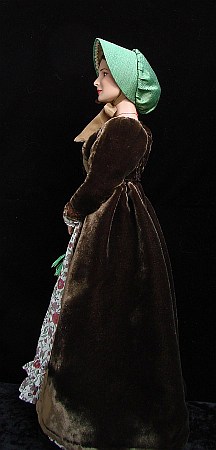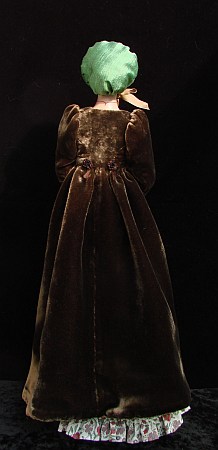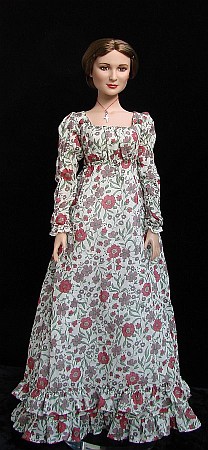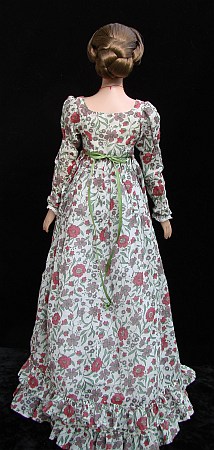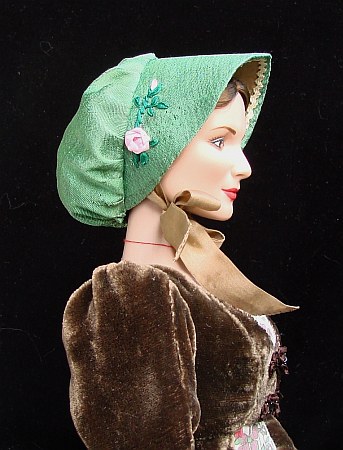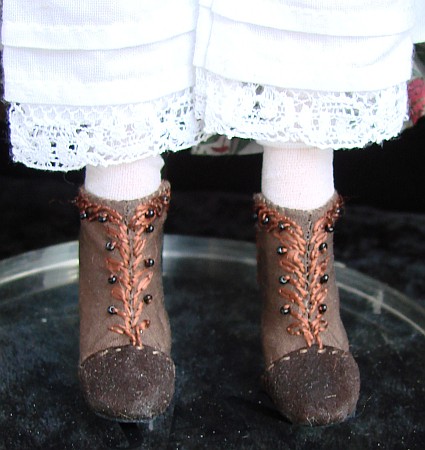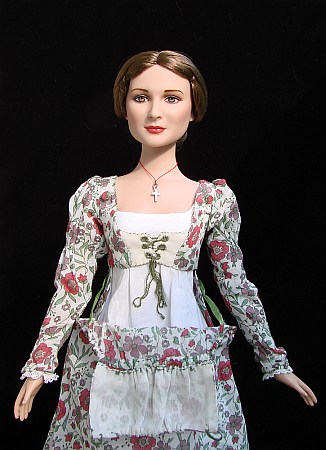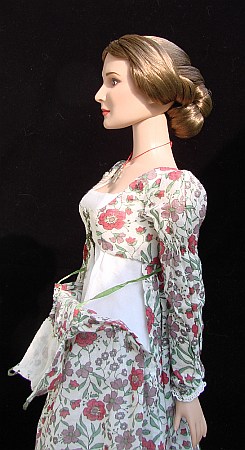| Description |
- The high-waisted flowered dress has the bodice front joined to
apron-front of skirt. The bodice is laced up in frnt,
then the drop-front piece ov the bodice is buttoned at shoulders.
The back part of the skirt is verz full and longer than the front.The
sleeves are three-times puffed, and the bodice is lined.
- The brown velvet pelisse closes in the front with 3
pairs of hooks and eyes. The central front parts and the central
back part are stiffen with a woven interlining. The sleeves
consist of 2 pieces, at the wrist, there is the beaded and
embroudered trim. and ribbon rosettas. The rosettas also embellish
the back waist seam and cover the front opening. The whole
coat is lined.
- Under the dress, there is the petticoat, attached to
the fitted bodice, and the long pantalettes. Both the
legs are separate items, joined only by a ribbon, gathering them
at waist.
-
-
The outfit is complemented by the white stockings and the
silk flat "Adelaide shoes" with suede toes,
llined and laced
up at their inner side.. Because the dress has not any pockets, the doll got the
purse with tassels. The bonnet consists of the stiffened, crescent shaped
brim and the pleated round crown.
|

